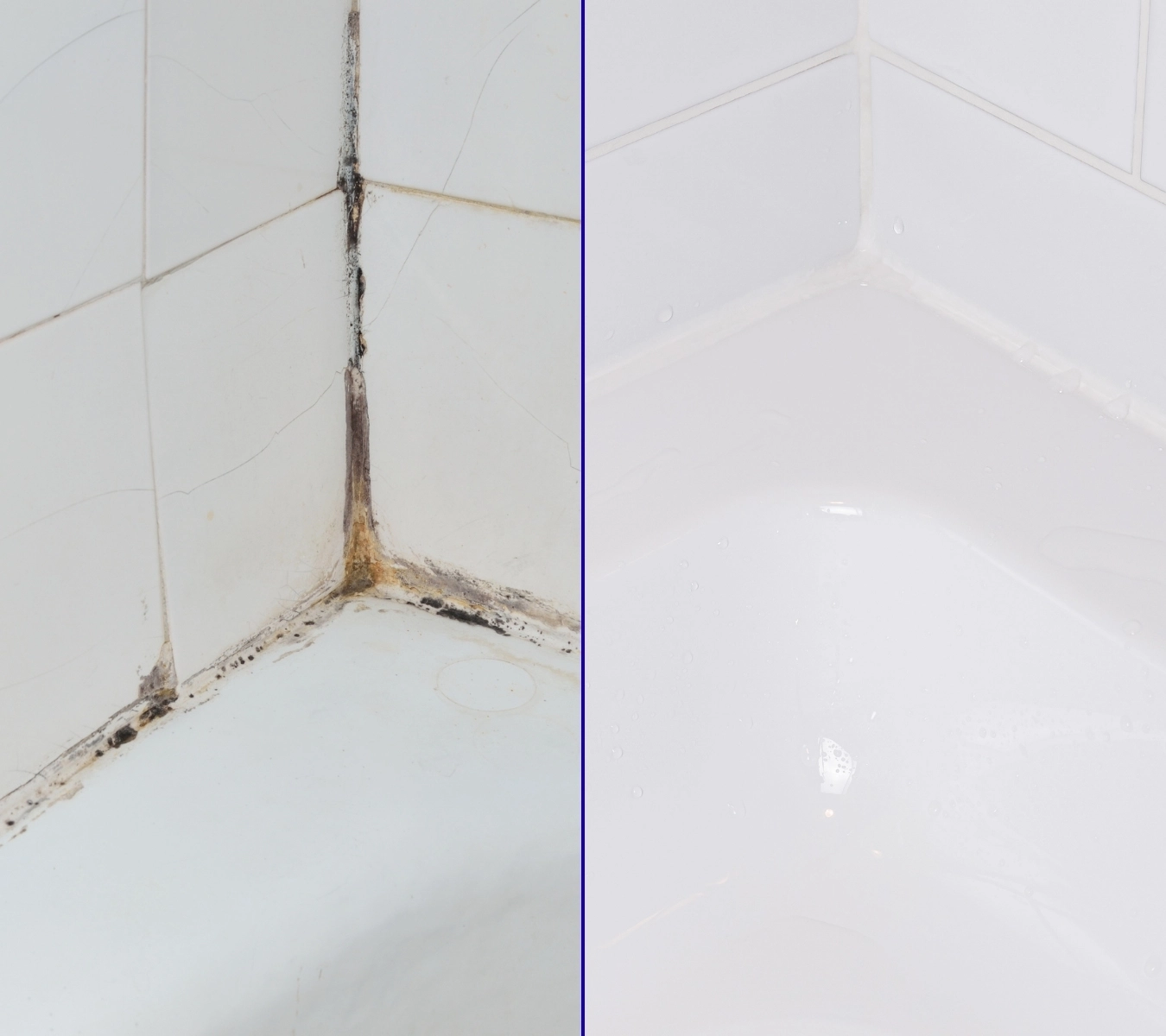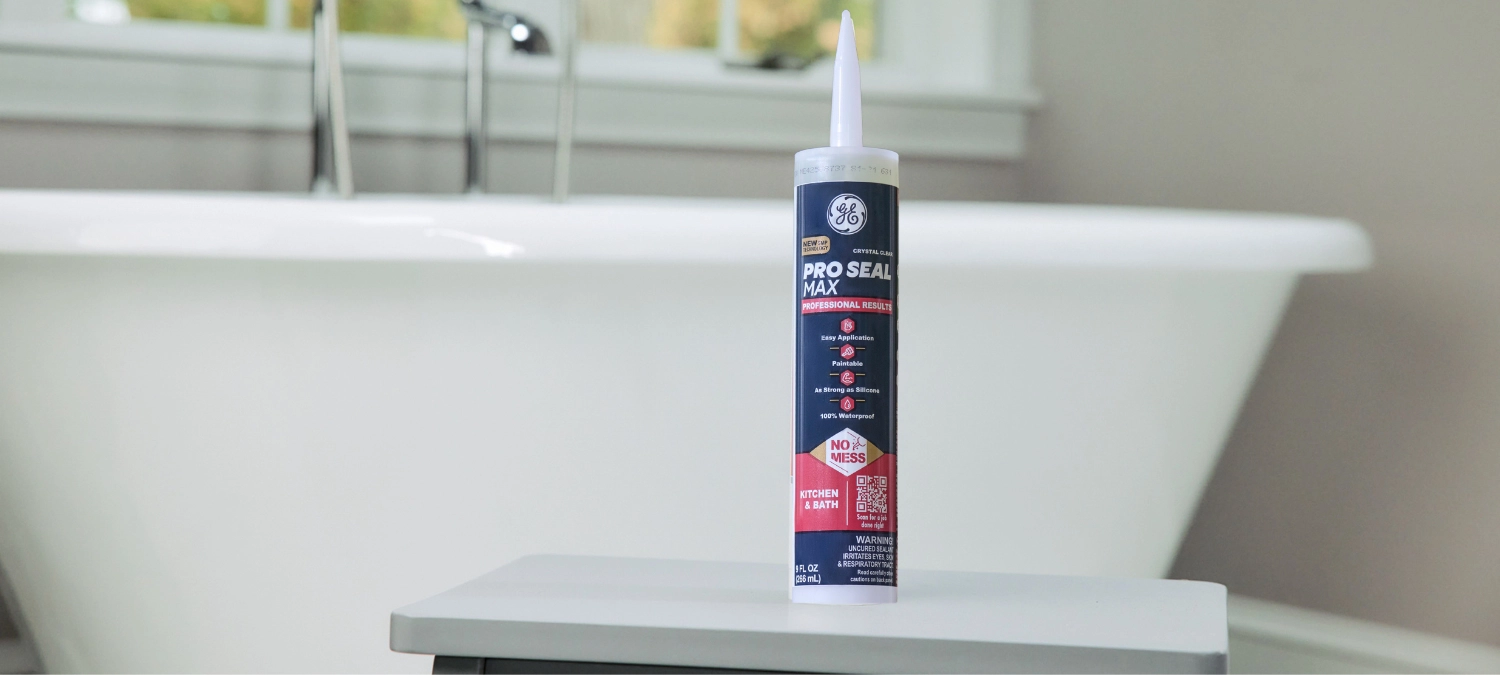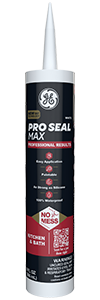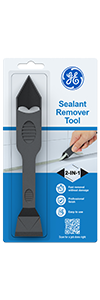Note: This DIY article is provided as a general guide only and is not intended to take the place of product-specific installation procedures; always follow applicable manufacturers’ instructions. Depending on your home’s age and condition, location within the home, and other potential factors, repairs and/or upgrades or other services may be necessary prior to the beginning and/or completion of your project that may involve the services of a home improvement professional. This article does not include advice pertaining to local building codes and/or any related inspections.
When a bathtub seal fails, water moves into drywall, behind tile, and under flooring. Because it hides, most damage grows unnoticed until your grout’s popping or your trim is swelling. This guide breaks down what your bathtub silicone sealant is protecting, how fast water damage escalates, and how to stop it early, with a simple reseal and the right GE sealant.
Just 1/8″ of missing sealant around your tub can allow enough water to grow mold in the drywall within 72 hours.
The seal around your bathtub is your first line of defense
The seal around your tub may be small, but it’s your first barrier against water reaching drywall, insulation, and subflooring.
To reseal your bathtub means removing the old, deteriorated sealant completely using a sealant removal tool or utility blade and then applying a fresh, continuous bead of waterproof sealant along every exposed joint where your tub meets the wall, tile, or trim.
A quality bathtub silicone sealant has to do three things:
- Flex with movement and tub usage
- Adhere to slick, nonporous surfaces like tile, glass, and fiberglass
- Completely block water out, even in steamy conditions
If your sealant can’t do all three, it won’t last long in a bathroom. That’s why acrylic caulks fall short because they shrink, crack, and trap moisture.
We’ll break down how GE Supreme Silicone Kitchen & Bath and GE Pro Seal Max Kitchen & Bath each fit different use cases later in this guide, so you can match the right sealant to your bathroom’s demands.

Early warning signs your sealant has failed
Most bathroom water damage doesn’t start with a flood. It starts with a failed seal you didn’t notice. If that thin bead around your tub is cracked, pulling away, or holding moisture, water is already looking for a way in. Spot these early signs, and you can reseal your bathtub before damage spreads to drywall, tile, or subfloor.
Five ways to tell your tub needs resealing
1. Sealant that looks cloudy or harbors mold inside: Clear silicone that darkens or grows mold from within (even after cleaning) has been breached.
2. Gaps or pulling away at the tub-to-wall joint: Shrinkage or separation, even a millimeter-wide, can direct water behind the wallboard.
3. Musty odors at the base of the tub or trim: Persistent damp smells are signs of trapped water and early mold activity.
4. Bubbling paint, soft drywall, or flaking grout nearby: These cosmetic issues often mark where moisture is degrading internal materials.
5. Brittle, dry, or cracking caulk texture: Try the press-and-pull test—if it flakes, it’s past its lifespan and no longer protecting.
If you see any of these signs, it’s time to reseal your bathtub with a high-performance bathtub silicone sealant. Early action helps prevent long-term bathroom water damage and saves you from costly repairs.
What happens after a failed seal: from a hairline crack to system failure
In a failed bathtub seal, water follows gravity, bypassing your bathtub silicone sealant and infiltrating everything beneath.
What starts as a small gap can spiral into tile damage, air quality issues, and full subfloor replacement in just weeks.
Week 1-2: Water gets in
- Micro-gaps let water bypass your sealant. Even a millimeter-wide separation allows moisture to slip behind tile or trim, especially when sealant has dried out or pulled away from the surface.
- Dark spots form under clear silicone caulk. Discoloration signals that moisture has been trapped long enough to support early-stage mold bloom.
- Mold colonizes grout lines and wall cavities. Without airflow or light, mold spreads behind baseboards, tile, and joints—far beyond what you can see or clean.
Most mold-related bathroom water damage isn’t covered by insurance making prevention a must.

Week 3-4: Hidden damage gains momentum
- Grout weakens and begins to flake. Soaked seams lose their bond, crumble under pressure, and open up new leak paths.
- Insulation and framing start retaining moisture. Wet insulation loses its R-value. Swollen framing feeds mold and slowly degrades wall integrity.
- Indoor air quality worsens. Mold spores begin circulating through HVAC returns and vents, triggering respiratory symptoms or allergic responses.
Month 2-3: Your structure pays the price
- Subfloors absorb and hold moisture. Waterlogged OSB or plywood below the tub swells, softens, and begins to rot, compromising everything above.
- Tiles loosen as the backer board deteriorates. The substrate loses strength, causing tiles to crack, shift, or fully detach from the wall or floor.
- Damage spreads beyond the tub zone. On second floors, ceiling stains and sagging drywall below often signal a failing subfloor. Trim lifts, paint bubbles, and materials separate at the seams.
- Repairs multiply quickly. What could’ve been fixed with a high-performance bathtub silicone sealant now demands tear-out, retiling, and structural repair.
That’s why we recommend resealing with GE Supreme Silicone Kitchen & Bath—a mold-resistant, Class 50 flexible bathroom sealant engineered for permanent water contact and daily expansion stress.
You don’t need a remodel to stop bathroom water damage. Most reseals take under an hour, and when done right, they deliver lasting protection with minimal cost.
Which bathtub silicone sealant protects best against bathroom water damage?
Not all bathroom sealants are built for the wettest zones. Whether your joint meets bare tile or painted trim, GE has two proven performers, each engineered to deliver watertight protection.
GE Supreme Silicone Kitchen & Bath
Our highest-performance formula for unpainted, high-moisture areas like tubs, showers, and backsplashes:
- 100% waterproof silicone sealant
- ASTM C920 Class 50: industry-best joint flexibility
- Water-ready in just 30 minutes
- Mold-free protection backed by a lifetime guarantee
- Available in clear, almond, and white
- Not paintable—ideal for tile, glass, acrylic, and fiberglass
GE Pro Seal Max Kitchen & Bath
A paintable hybrid powered by advanced SMP technology:
- Silane-Modified Polymer formula for superior flexibility
- Paintable in 1 hour, water-ready immediately
- Class 35 (White) and Class 25 (Clear) flexibility ratings
- Ideal where tubs meet painted baseboards or trim
Note that paintable doesn’t mean water-vulnerable. GE Pro Seal Max resists cracking, shrinking, and mold where acrylic caulks fail, especially in wet corners and high-humidity zones.
A tube of GE Supreme Silicone Kitchen & Bath or GE Pro Seal Max Kitchen & Bath costs less than replacing damaged subflooring or tile and helps prevent major bathroom water damage before it starts.
Find GE silicone sealants at a store near you in the U.S. or Canada.



